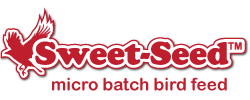Quick Start Guide to Identifying Your Backyard Birds

It can be very exciting to see a new and unexpected guest at your feeders, but as more birds visit your backyard, how can you tell which is which?
Get the Proper Equipment
The first step in properly identifying backyard birds is to be equipped for the task. You do not need state-of-the-art tools, but a few simple supplies can help you be ready to identify birds.
- Binoculars - You can't identify birds you can't see clearly. Good binoculars will have a close focus range (allowing you to focus on birds just 8-10 feet away), and should have 6-10 times magnification. Test out a few different pairs at a sporting goods store to find optics you like, taking into account how easily they focus and how heavy they feel. Prices can range from under $100 to $1,000 or higher, but choose the best binoculars that fit in a budget you're comfortable with.
- Field Guide - A detailed field guide will be your most valuable tool for identifying birds. There are dozens of guides available – some use photos while some use illustrations, some have just one or two views of a bird while others have multiple views, angles and poses to study. Regional or national guides will be most helpful, and the guide should include a map of each bird's range for easy reference. Browse through a few guides at the bookstore or library to see which you like best.
- Camera - You don't need to be a professional nature photographer to take pictures of birds that can help with identification. A good cell phone camera may be adequate for backyard photos, or you might want to investigate a simple point-and-shoot camera. A strong optical zoom will help you get closer to birds, and burst modes will take multiple pictures even while the bird is in motion. You can study the pictures at your leisure to identify birds, or share them with others who can help you with mystery visitors.
- Feeder - A bird feeder can be very useful not only for attracting more birds to your backyard, but for identifying them as well. Birds are more likely to pause at a feeder and give you a good view, which will help you study their individual colors and markings so you can identify the species. Position the feeder near a window so you can see and photograph it clearly, and keep it filled with fresh, healthy birdseed to attract new guests.
Watch Closely
Observation is the key to identifying your feathered guests, but you have to do more than just look at birds to know which ones they are. There are several important clues you can watch for that will help you determine which bird is which.
- Size - Study how big a bird is, and how its size compares to surroundings such as a distinctive stone, fence post or other feature that can give an accurate size impression. Note if the bird has any exceptionally large features – a very long tail, oversized head or long legs – and be aware of its overall size proportions.
- Color - Note the bird's overall colors, especially any contrasting patches that stand out. Look for patches of color on the breast, wings, head or rump, and compare those colors to surrounding feathers. Some birds will even seem to change color with an iridescent, metallic sheen in good sunlight.
- Markings - Distinctive markings are critical for identifying many birds. Look for stripes, patches, dots, bars or other colorful marks on the face, head, breast and wings. Note the shape, length and thickness of any markings, and if the markings create an overall pattern such as a checkerboard or zebra-like pattern.
- Movement - How a bird moves can be an important identity clue. When the bird flies, does it soar, glide or rapidly flap its wings? Does it stay in a straight line or have an undulating path? On the ground, note if the bird walks or hops, and how it holds its tail or wings when perched. Also look for any bobbing, swaying or other interesting motions.
- Song - Even birds that look almost identical may have very different voices. If you can hear a bird singing – and can see which bird is making the song so there is no confusion – note the pitch and tone of its voice, as well as how the song changes in tempo. Count the song's notes and compare how the pitch may change at the beginning or end of the song. Each of these clues can bring you closer to knowing which bird you are looking at. Compare your observations to the notes in your field guide or on websites, and note each bird's range and habitat preferences at the same time. As you get more familiar with different birds, you will have an easier time identifying each one.
Feel Like Giving Up?
Despite your best efforts, you won't always be able to identify every bird. Some birds will have very subtle plumages, or they may stay hidden and not offer you the best views. Some birds will be only brief visitors and may be gone again before you can confirm what species they are. And some birds may be confusing hybrids that don't look quite right for either of their parent species, or they could be youngsters that don't yet look like adults. While it can be fun to identify an unusual bird, it's important that you not let an unknown bird cause bitter frustration and take away from your enjoyment of your backyard birds. Your identification skills will grow with practice, but be sure to keep your practice in perspective and always enjoy every bird you see.
Image by Bob Gates
